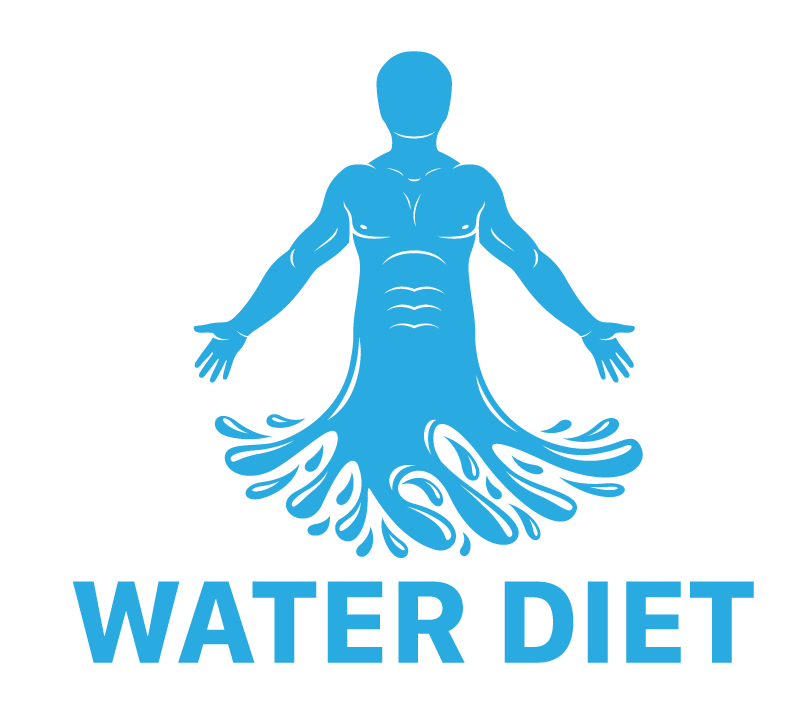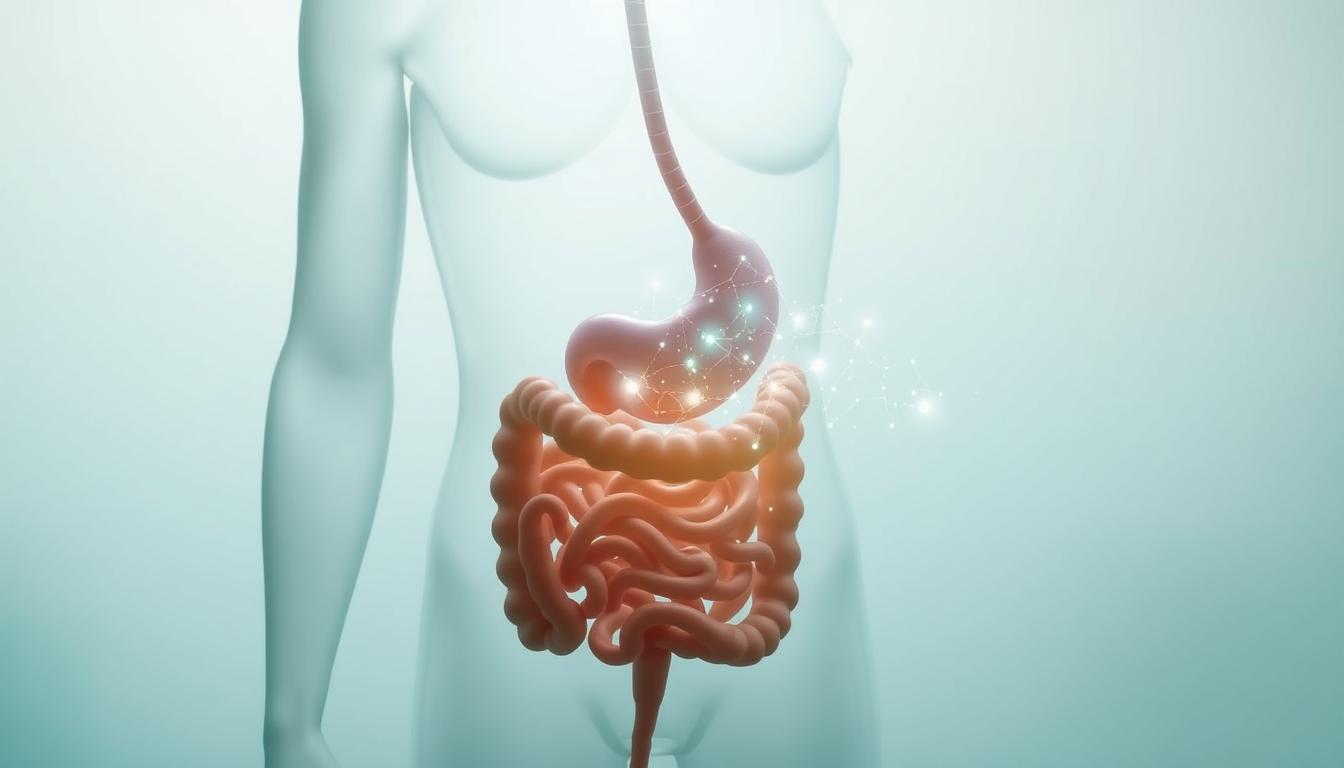Intermittent fasting is now a top choice for weight loss and better metabolic health. It means eating less for short periods, like 12 to 40 hours, then eating normally. By mixing different fasting methods, like water fasting, people can get the best results and enjoy many benefits.
Intermittent water fasting is a twist on regular fasting. It involves not eating food and only drinking water for some time. This lets the body deeply clean and repair itself. By mixing water fasting with other fasting styles, like the 16/8 method or the 5:2 diet, people can boost the benefits of fasting even more.
Key Takeaways
- Intermittent fasting involves periods of calorie restriction, typically lasting 12-40 hours, followed by normal eating.
- Combining water fasting with intermittent fasting can optimize weight loss and metabolic health benefits.
- Popular intermittent fasting methods include the 16/8 method, 5:2 diet, Eat Stop Eat, alternate-day fasting, and the Warrior Diet.
- Intermittent water fasting can enhance cellular repair, boost fat burning, and improve insulin sensitivity.
- Staying hydrated, choosing nutrient-dense foods, and listening to your body are key to success with intermittent water fasting.
Introduction to Intermittent Fasting
Intermittent fasting is now a popular way to lose weight and improve health. It means eating in cycles, with times of not eating at all. These fasting periods can last from 12 to 40 hours. During these times, you don’t eat anything, but you can drink water, coffee, and other drinks without calories.
The main aim of this method is to eat fewer calories. Studies show it can help with weight loss and better health. A review in 2020 found that people lost weight, with amounts ranging from 0.8% to 13% of their starting weight. By eating less often, you naturally eat fewer calories, which helps you lose weight.
Intermittent fasting is not just about weight loss; it also offers numerous potential health benefits, such as reduced insulin resistance, decreased inflammation, and improved brain function.
There are many ways to do intermittent fasting, each with its own rules:
- Time-restricted eating: This method involves fasting for 12-20 hours and eating within a specific window, such as the 16/8 method (16 hours of fasting, 8 hours of eating).
- The 5:2 diet: Individuals eat normally for five days and restrict calorie intake to 500-600 calories on two non-consecutive days.
- Eat Stop Eat: This approach involves a 24-hour fast once or twice a week, with normal eating patterns on the remaining days.
- Alternate-day fasting: Fasting every other day, with a small meal (around 500 calories) on fasting days and normal eating on non-fasting days.
- The Warrior Diet: Fasting for 20 hours and eating one large meal at night within a 4-hour window.
Before starting intermittent fasting, it’s wise to talk to a healthcare professional, especially if you have health issues or a history of eating disorders. Eating well during your eating times is key to staying healthy while fasting.
Benefits of Intermittent Fasting
Intermittent fasting has become popular for its health perks. It involves fasting and eating at different times. This can help with weight loss, improve metabolic health, and boost overall well-being.

Weight Loss and Improved Metabolic Health
One key benefit of intermittent fasting is its support for weight loss. It helps create a calorie deficit and controls hunger hormones. A 2022 review found it lowers insulin resistance, and a 2016 review showed it reduces triglyceride levels in humans and animals.
It also improves metabolic health markers. Studies show it can lower blood pressure, better blood sugar levels, and fight oxidative stress. Plus, it may start a process called autophagy, which helps cells clean out old or damaged parts. This can protect against diseases like cancer and Alzheimer’s.
Potential for Sustainable Lifestyle Change
Intermittent fasting is easy to keep up with because it’s simple. It doesn’t require counting calories or cutting out foods. Its flexibility lets you fit it into your life and eating habits.
This makes it a great choice for those wanting a lasting way to manage weight and health. By focusing on when to eat, it blends well with your daily routine.
Compatibility with a Nutritious, Whole Foods Diet
Intermittent fasting works well with any diet because it focuses on timing, not food types. This makes it easy to eat healthy foods during your eating windows. Eating nutrient-rich foods during these times boosts the health benefits of fasting.
It’s especially good for those combining it with resistance training and a high-protein diet. This helps with muscle growth and maintenance. By planning meals around workouts and choosing protein-rich foods, you can enhance the effects of exercise and fasting on your health.
| Intermittent Fasting Method | Description | Potential Benefits |
|---|---|---|
| 16/8 Method | 16-hour fasting window, 8-hour eating window | Weight loss, improved insulin sensitivity, reduced inflammation |
| 5:2 Diet | 5 days of normal eating, 2 days of restricted calorie intake | Weight loss, improved blood sugar control, increased longevity |
| Eat Stop Eat | 24-hour fasting period once or twice per week | Weight loss, improved metabolic health, enhanced cellular repair |
| Alternate-Day Fasting | Alternating between fasting days and normal eating days | Weight loss, reduced risk of chronic diseases, improved brain function |
Challenges of Intermittent Fasting
Intermittent fasting is popular for losing weight and improving health. But, it has its challenges. Changing to this way of eating can be tough. It means changing how you eat and think.
Going Against Natural Intuition
One big challenge is fighting our natural urge to eat. We’re used to eating when we’re hungry. Intermittent fasting means eating at set times, which is hard for some.
Dealing with Hunger
When fasting, you might feel very hungry. This is hard, especially if you’re new or have tried calorie restriction before. But, your body will get used to it, and you’ll eat less over time.
“Alternate-day fasting in nonobese subjects was studied for its effects on body weight, body composition, and energy metabolism.”
Potential Impact on Mood and Side Effects
Intermittent fasting can change how you feel and may cause side effects at first. You might feel irritable, have headaches, or find it hard to focus. You might also have trouble sleeping. These issues can be tough, but they usually get better as you adjust.
| Side Effect | Prevalence | Management Strategies |
|---|---|---|
| Headaches | Common in the first 1-2 weeks | Stay hydrated, consider electrolyte supplements |
| Irritability | Frequent during initial adjustment period | Practice stress management techniques, engage in calming activities |
| Sleep Disturbances | May occur in the first few weeks | Establish a consistent sleep schedule, create a relaxing bedtime routine |
Even with challenges, many people find intermittent fasting worth it. As you get used to it, you’ll eat less, feel better, and see improvements in weight and health. With time, patience, and taking care of yourself, you can overcome these challenges and succeed.
Popular Intermittent Fasting Methods
Intermittent fasting has become popular for weight loss and better health. There are many ways to do it, so it’s key to know the differences. This helps you pick the best method for your life and goals. Let’s look at some top intermittent fasting methods.
12-Hour Fasting
12-hour fasting is great for beginners. It means fasting for 12 hours a day, which often includes your sleep time. This method fits with your body’s natural rhythms. It also makes it easy to stick to because you eat during a set time every day.
16/8 Method
The 16/8 method, also known as the Leangains Diet, has you fasting for 16 hours and eating for 8 hours. A study in 2018 showed that this method helped people with obesity lose almost 3% of their weight. They also saw lower blood pressure without feeling hungry or deprived.
5:2 Diet
The 5:2 diet lets you eat normally for five days a week. Then, you eat only 500-600 calories on the other two days. This way, you can choose which days to fast, making it easier to stick with over time.
Eat Stop Eat
Eat Stop Eat is a flexible way to fast. You don’t eat solid food for 24 hours once or twice a week. But, you can drink calorie-free drinks. This method lets you eat normally on other days.
Alternate-Day Fasting
Alternate-day fasting means fasting every other day. You can eat up to 500 calories on fasting days. Studies show it’s as good as a low-calorie diet for losing weight.
The Warrior Diet
The Warrior Diet is a strict way to fast. You eat very little for 20 hours, mostly raw fruits and veggies. Then, you eat a big meal in a 4-hour window at night. This method is for those experienced with fasting and needs careful planning to get enough nutrients.
| Fasting Method | Fasting Duration | Eating Window |
|---|---|---|
| 12-Hour Fasting | 12 hours | 12 hours |
| 16/8 Method | 16 hours | 8 hours |
| 5:2 Diet | 2 days per week | 5 days per week |
| Eat Stop Eat | 24 hours, 1-2 times per week | Normal eating on non-fasting days |
| Alternate-Day Fasting | 24 hours, every other day | Normal eating on non-fasting days |
| The Warrior Diet | 20 hours | 4 hours |
Combining Water Fasting with Intermittent Fasting
Water fasting and intermittent fasting can work well together. This combo can boost fat burning and improve metabolic health. It also helps with cellular repair, like autophagy.
Studies show that intermittent fasting is good for health. In the New England Journal of Medicine, de Cabo R. and Mattson M.P. talked about how fasting can help with health and aging. Goldhamer A.C. et al. found that water-only fasting can help with high blood pressure in the Journal of Manipulative and Physiological Therapeutics.
When mixing water fasting with intermittent fasting, think about how long and how often you fast. You can use the 16/8 or 5:2 methods but add water fasting during the fasting times.
“The effects of intermittent fasting on health and aging were studied by de Cabo R. and Mattson M.P., emphasizing that fasting methodologies can impact various aspects of health and disease, published in the New England Journal of Medicine in 2019.”
Water fasting during an intermittent fasting plan can bring more benefits. These include more fat burning, better insulin sensitivity, and autophagy. Autophagy helps cells clean and repair themselves. It’s linked to better metabolic health and living longer.
| Fasting Method | Description | Potential Benefits |
|---|---|---|
| Water Fasting | Consuming only water for a specified period | Increased fat burning, cellular repair, and detoxification |
| Intermittent Fasting | Alternating periods of fasting and eating | Improved metabolic health, weight management, and insulin sensitivity |
| Combined Approach | Integrating water fasting into an intermittent fasting routine | Enhanced benefits of both methods, including increased fat burning, autophagy, and metabolic flexibility |
Combining water fasting with intermittent fasting has many benefits. But, it’s important to be careful and get advice from a doctor first. People with health issues like diabetes or kidney disease should talk to their doctor before starting any fasting plan.
By carefully combining these fasting methods, you can improve your health and well-being. This might lead to losing weight, better metabolic health, and more cellular repair and regeneration through autophagy.
Intermittent Water Fasting: Combining Fasting Methods for Optimal Results
Intermittent water fasting blends the strengths of intermittent and water fasting. It boosts weight loss, cell repair, and metabolic health. By adding water fasting to an intermittent routine, people see better fat burning, improved insulin use, and more metabolic flexibility.

Enhancing Weight Loss and Fat Burning
Water fasting with intermittent fasting creates a big calorie deficit, aiding in weight loss and fat burning. The body uses stored fat for energy, increasing fat burning and metabolism. Most people who try this method lose weight, often fasting for 12 hours or more.
Boosting Autophagy and Cellular Repair
Water and intermittent fasting boost autophagy, a process where the body recycles old or damaged cells. This combo may enhance autophagy, leading to better cell repair, less inflammation, and longer life. This process is key for staying healthy and avoiding age-related diseases.
“Intermittent fasting has been shown to have a wide range of health benefits, including weight loss, improved insulin sensitivity, and increased longevity.” – Dr. Jason Fung, author of “The Complete Guide to Fasting”
Improving Metabolic Flexibility and Insulin Sensitivity
Intermittent water fasting improves metabolic flexibility, the body’s ability to switch between carbs and fats for energy. It also boosts insulin sensitivity, leading to better blood sugar control and fat use. This is important for preventing diabetes and obesity.
| Fasting Protocol | Weight Loss | Fat-Free Mass Gain | Strength Improvement | Aerobic Capacity Improvement |
|---|---|---|---|---|
| Intermittent Fasting + Exercise | Significant | Moderate | Significant | Significant |
| Exercise Only | Moderate | Slight | Moderate | Moderate |
| Intermittent Fasting Only | Slight | No Change | No Change | No Change |
A study with obese women found that combining 5:2 fasting with HIIT improved body composition, strength, and aerobic ability. However, fasting alone didn’t lead to the same results in body composition and metabolism.
Tips for Success with Intermittent Water Fasting
Intermittent water fasting can boost your health by improving weight loss, cell repair, and metabolic health. To make it work well, focus on staying hydrated, eating nutrient-rich foods, and listening to your body.
Staying Hydrated During Fasting Periods
Keeping enough water in your system is key during fasting. Aim for 2-3 liters of water a day to avoid dehydration and keep your health in check. You might also want to add electrolytes like sodium and potassium to prevent imbalances that cause headaches or tiredness.
Men should drink 15.5 cups of water daily, while women should aim for 11.5 cups.
Choosing Nutrient-Dense Foods During Eating Windows
When you eat, focus on whole foods to get the vitamins and minerals your body needs. Choose lean proteins, healthy fats, and fiber-rich fruits and vegetables. These foods help you feel full, keep your blood sugar stable, and improve your health.
Don’t overeat during your eating times. This can stop you from losing weight and undo the fasting benefits.
One common mistake to avoid is overeating during the eating window, which can impede weight loss goals.
For better results, combine fasting with exercise. A study showed that exercise with fasting leads to more weight loss than fasting alone. Resistance exercises like weightlifting help keep your muscle mass up during fasting.
Listening to Your Body and Adjusting as Needed
Remember, fasting affects people differently. Pay attention to how your body reacts and adjust your fasting plan if needed. If fasting causes negative effects or feels too hard, try a different method or talk to a healthcare professional for advice.
If a 24-hour fast is too tough, try a shorter one or a different type like the 16/8 or 5:2 method. Sticking with a fasting plan you can keep up with is key to seeing good results. For more on how a water diet can enhance your fasting, check out https://www.water-diet.com/water-diet-boosting-intermittent-fasting-results/.
| Fasting Duration | Potential Weight Loss | Considerations |
|---|---|---|
| 24 hours | 1.5 to 3 pounds (mostly water weight) | Maintain hydration and electrolyte balance |
| 72 hours | 2% of body weight | Consult with a healthcare professional |
By focusing on staying hydrated, eating nutrient-rich foods, and listening to your body, you can make intermittent water fasting a part of your life. This can lead to better health and well-being.
Potential Risks and Precautions
Intermittent water fasting has many benefits, but it’s important to know the risks and take steps to stay safe. People with diabetes or those on blood sugar medications should talk to a doctor before starting. Pregnant or breastfeeding women, kids, and teens should not fast because their bodies need special nutrients for growth.
Those with eating disorders or a history of unhealthy eating should be careful with fasting. It could make things worse. It’s important to focus on health and well-being, not just losing weight. Getting advice from a dietitian or mental health expert can help make fasting safe and healthy.
Some people might feel bad during a fast, like headaches or feeling dizzy. These feelings usually go away with water and rest. But if they don’t go away or get worse, stop fasting and see a doctor to check for health problems.
Knowing the risks and being careful can help make fasting safe and beneficial. Always put your health first and make choices that fit your needs. If you’re unsure, always get advice from a professional.




